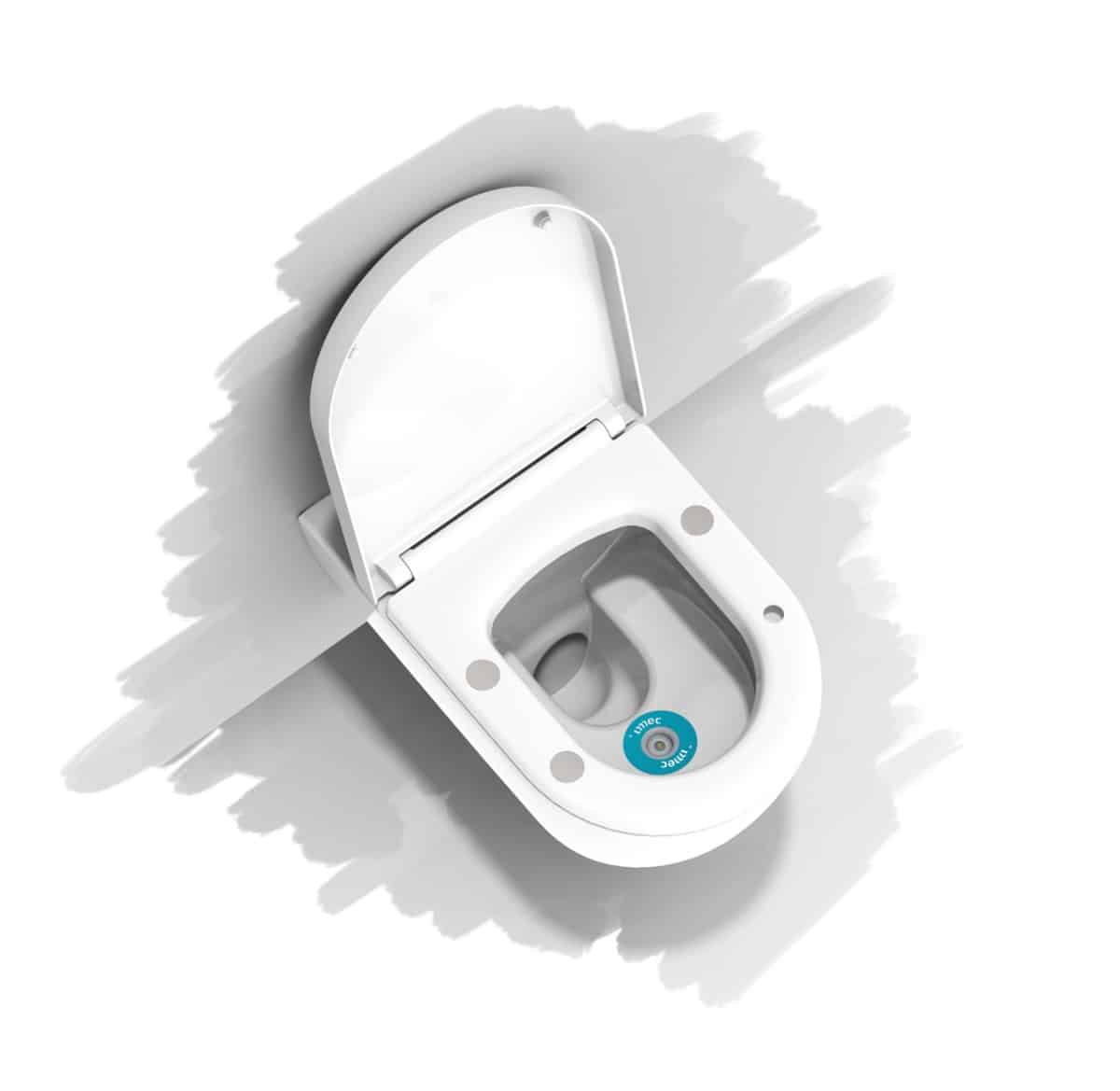
We all visit the bathroom. But what does such a trip say about our health? Imec Nederland is trying to find out during the Lowlands music festival by using toilets full of sensors. During a visit to the toilet, the Smart Toilet from the research institute takes a closer look at the festival-goers. When they leave the cubicle, visitors receive a healthy meal suggestion based on their readings. With this advice in their pocket, they can then head straight over to Brasserie 2050.
It works like this: Smart Toilets not only measure a person’s heart rate and heart rate variability (how much time there is between two heartbeats), but the toilet seat keeps track of the fluctuations in blood pressure as well. Sensors in the bowl are also used to monitor the temperature and salt concentration of urine. Jolanda Bax-Witteveen is project leader of this study at Imec and explains how it works: “You can read all kinds of health aspects from, for instance, the salt concentration of urine. This drops when there is less salt in the urine. This person could then be advised to eat more salty things, such as soup.”
Or if someone is straining hard, which causes their blood pressure to skyrocket, this person will then be given the tip to take in a little more fiber and fluid. And there are many other things that are able to be measured on the toilet which can tell you something about the kind of food a person needs. “Your body constantly regulates your blood pressure, is concerned with keeping the fluid level in balance, and ensures that salts are properly retained. This changes from day to day, but you still go to the bathroom. So this is a good time to take measurements. They are given a meal suggestion of what they should choose on the menu based on this range of different values. But they are free to have something else, of course ,” Bax-Witteveen says.
Food of the future
Brasserie 2050 is drawing attention to the food issues of today and in the future with the meals that they are serving. “It is essential that we eat, grow and produce in a different way. We want to show that this is possible here”, says Tom van Kuyk from the Rabobank, one of the partners of this restaurant. “The menu changes every time and each dish tells its own unique story or highlights a dilemma. This is how we want to make the food issue a topic for discussion and tangible for a wide audience. This year, for example, plastic soup is on the menu as a way of calling attention to the plastic problem.” Sustainability and future-proofing are not only reflected in the meals, but also in the building design of the restaurant. “It can be disassembled and re-used. The tables are made of recycled plastic and GFT waste is composted,” Van Kuyk explains. What else will also be on the menu this year is to remain a surprise. Nevertheless, tomorrow evening, Brasserie 2050 will be revealing other meals on the menu.
The pop-up restaurant is a collaboration between festival organizer MOJO, The Food Line-up and Rabobank. In order to make meal suggestions, the chefs sent the ingredients for ten different meals to Imec. “These were then matched with the various Smart Toilet outcomes,” says Bax-Witteveen. Yet the project leader would like to stress that they are not food experts at Imec Nederland. “We are the researchers who analyze the sensor readings. Of course, we have based our menu suggestions on current scientific literature, but you have to see the advice as science with a wink. It is exciting for us because we are very curious about the measurements that the seats make. The sensors are now measuring in an unusual place, namely your buttocks when you sit on the seat. Normally you have a clip on your finger or a pad on your chest. This is actually a first prototype, and a festival with so many visitors is a perfect time to test it out.”
Not the first time
Yet this is not the first time that the sensory toilet seats have been used, states Bax-Witteveen. “To see if everything works, we replaced the normal toilet seat at our place on the High Tech Campus with these smart seats. Employees were a bit perplexed when they initially saw those seats, but we test everything in-house first, so they’re used to it”, laughs Bax-Witteveen. ” Not all sensors are able to measure a signal because someone isn’t sitting on the seat properly, for example. Visitors don’t have to worry, they always get a meal suggestion. Just on the basis of less data then.”
Results of the research are being stored by Imec in order to find out how accurate the data is and what can be improved, although the researchers do not expect any scientific conclusions to be drawn from this. “We cannot see from the data whether it concerns women or men. We do not know the age of the visitors. And we don’t keep track of other issues that may be related to health either, such as weight. Besides all of that, we do not perform any reference measurements to check whether, for example, the heart rate measured while on the toilet seat is the same as when you place the sensor in the most ideal place, such as your finger or on your chest. Maybe that is something for the future.”
All the same, Bax-Witteveen believes that sensors in toilet seats could be useful in the future: “Think about nursing homes, where vulnerable people often reside. Measuring regularly and more-or-less unnoticed can help with keeping a close eye on these people.”

